
by Ria Olivier | Dec 2, 2025 | Announcement, Research, SANAP, SCAR, Science
 The South African National Antarctic Programme (SANAP) is pleased to share an exciting update from the Scientific Committee on Antarctic Research (SCAR). The international Antarctic research community is preparing to gather for one of the most anticipated events in polar science: the 12th SCAR Open Science Conference, taking place 8–19 August 2026 in Oslo, Norway. Hosted by SCAR in partnership with the Norwegian Polar Institute, the conference will be held at the centrally located Clarion Hotel – The Hub, bringing together researchers, students, policy makers, and partners from across the globe under the theme:
The South African National Antarctic Programme (SANAP) is pleased to share an exciting update from the Scientific Committee on Antarctic Research (SCAR). The international Antarctic research community is preparing to gather for one of the most anticipated events in polar science: the 12th SCAR Open Science Conference, taking place 8–19 August 2026 in Oslo, Norway. Hosted by SCAR in partnership with the Norwegian Polar Institute, the conference will be held at the centrally located Clarion Hotel – The Hub, bringing together researchers, students, policy makers, and partners from across the globe under the theme:
SCAR2026: “Diving into Antarctic Science – Making Waves for the Future”
Call for Abstracts — Deadline 28 February 2026 (23:59 UTC) – In the spirit of collaboration and scientific discovery, SCAR has officially opened the call for abstracts for the 2026 conference. Researchers are encouraged to submit abstracts by 28 February 2026 at 23:59 UTC. This is a valuable opportunity for the SANAP community to showcase cutting-edge Antarctic research and engage with colleagues working across a range of disciplines.
SUBMIT ABSTRACT
A Diverse and Dynamic Scientific Programme: The 2026 parallel session programme features 50 sessions spanning; Physical Sciences, Geosciences, Life Sciences, Humanities and Social Sciences and Cross-disciplinary themes. With this breadth of topics, the programme promises to highlight both disciplinary excellence and interdisciplinary innovation.
Explore the full session list here
First Circular Now Available. It provides important details, including Key conference dates, Conference structure, Travel guidance for visiting Oslo and Norway, Venue information, Exhibition and sponsorship opportunities. 📄 Download the First Circular.
Stay Informed. Visit scar2026.org for: Full programme details, Organising committee information, Partners, Sponsors, Travel and practical information. The website will be continuously updated as planning progresses.
Important Dates to Bookmark
| Date |
Event |
| 31 January 2026 |
Call for satellite events closes |
| 28 February 2026 |
Abstract submission closes |
| February 2026 |
Early-bird registration opens |
| 8–9 & 16 August 2026 |
Business meetings & satellite events |
| 10–14 August 2026 |
12th SCAR Open Science Conference |
| 15 August 2026 |
Science Group Business Meetings |
| 17–19 August 2026 |
SCAR Delegates Meeting |
SANAP encourages all South African polar researchers — established and emerging — to participate actively in SCAR2026. Let’s ensure that South Africa continues to make meaningful contributions to global Antarctic science and collaboration.
We look forward to seeing many SANAP scientists represented in Oslo!

by Ria Olivier | Nov 12, 2025 | Announcement, Research, SANAP, SCAR, Science
Recognising Excellence in Antarctic Research and Service
The Scientific Committee on Antarctic Research (SCAR) plays a pivotal role in advancing knowledge of the Antarctic and Southern Ocean. A cornerstone of this mission is the recognition of excellence — celebrating researchers and contributors whose work and service embody the spirit of international cooperation and scientific discovery in the Antarctic community.
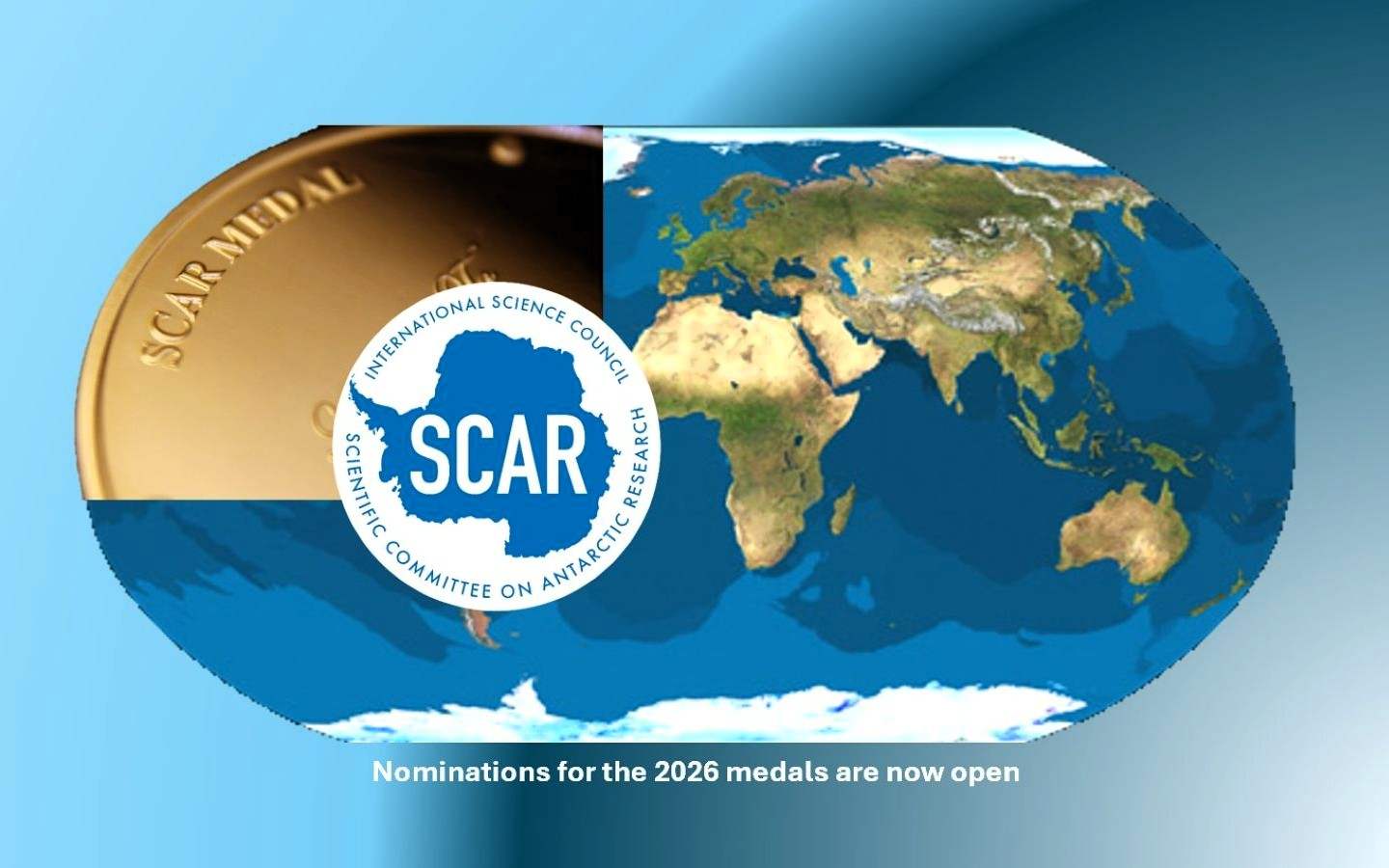 Honouring Outstanding Contributions
Honouring Outstanding Contributions
To highlight and reward those who exemplify the best of the Antarctic community, SCAR established a series of prestigious medals. These awards celebrate both scientific achievement and dedicated service, serving as an inspiration for the next generation of polar researchers.
Since their inception in 2006, SCAR has awarded:
In 2018, SCAR introduced a third category:
Each of these medals is awarded through a peer-nominated process, ensuring fairness, transparency, and the recognition of true merit. Recipients are selected by an expert committee based on their outstanding contributions to Antarctic research, collaboration, or education and outreach.
The President’s Medal for Outstanding Achievement
In addition to the main medals, SCAR also awards the President’s Medal for Outstanding Achievement. This distinguished honour is presented by the outgoing SCAR President to an individual who has made exceptional contributions to SCAR and the wider Antarctic community during their term.
Call for Nominations — 2026 SCAR Medals
Nominations for the 2026 SCAR Medals are now open!
🗓️ Initial nominations close on 22 March 2026.
This is a unique opportunity to recognise peers who have made remarkable contributions to Antarctic science, coordination, or communication.
For detailed information on the award criteria and selection process, please visit SCAR’s Detailed Information page.

by Ria Olivier | Nov 11, 2025 | Announcement, Research, SANAP, SANAP Student, Science
At the edge of the Earth lies a mirror of our planet — a place where ice tells the story of climate, oceans, and life itself. The South African National Antarctic Programme (SANAP) stands at the forefront of exploring and protecting this frozen world.
This November, the SANAP research community will gather once again for the 7th SANAP Symposium, a meeting of minds, science, and purpose.
Dates: 16–19 November 2025
Venue: Kwalata Game Reserve, South Africa
The Symposium brings together researchers, students, policymakers, and environmental stewards from across disciplines to share discoveries from the Antarctic and Southern Ocean, and to reflect on how they shape our understanding of global change.
From the southernmost ice sheets to Africa’s beating heart, SANAP researchers explore the connections that link polar science to climate, ecosystems, and society. The Symposium offers a unique opportunity to discuss new research, inspire collaboration, and strengthen the community committed to safeguarding the world’s most remote environments.
Join the conversation, connect with fellow explorers of knowledge, and be part of shaping a sustainable polar future.
More information click here

by Ria Olivier | Oct 15, 2025 | Announcement, Gough Island, Humanities, SANAP
 After more than a year on the remote and rugged shores of Gough Island, the Gough 70 Overwintering Team has safely arrived back in Cape Town today — marking the end of another remarkable chapter in South Africa’s contribution to global environmental and climate research.
After more than a year on the remote and rugged shores of Gough Island, the Gough 70 Overwintering Team has safely arrived back in Cape Town today — marking the end of another remarkable chapter in South Africa’s contribution to global environmental and climate research.
 The team has spent the past year maintaining and operating the South African weather and research station on Gough Island, one of the most isolated and scientifically significant islands in the South Atlantic Ocean. Their work forms a vital part of the South African National Antarctic Programme (SANAP), contributing to international understanding of climate systems, ocean–atmosphere interactions, and biodiversity conservation in one of the world’s most pristine environments. Throughout their 13-month stay, the Gough 70 team challenged weather conditions, isolation, and logistical difficulties — yet continued to deliver crucial meteorological observations and research support. Their dedication and resilience embody the true spirit of the SANAP community.
The team has spent the past year maintaining and operating the South African weather and research station on Gough Island, one of the most isolated and scientifically significant islands in the South Atlantic Ocean. Their work forms a vital part of the South African National Antarctic Programme (SANAP), contributing to international understanding of climate systems, ocean–atmosphere interactions, and biodiversity conservation in one of the world’s most pristine environments. Throughout their 13-month stay, the Gough 70 team challenged weather conditions, isolation, and logistical difficulties — yet continued to deliver crucial meteorological observations and research support. Their dedication and resilience embody the true spirit of the SANAP community.
 We extend a heartfelt welcome home to each member of the team and express our thanks for their commitment and hard work. Their efforts not only uphold South Africa’s legacy of excellence in polar and sub-Antarctic research but also ensure that critical data continues to support global scientific collaboration. (above taken when arriving at Gough Island in 2024)
We extend a heartfelt welcome home to each member of the team and express our thanks for their commitment and hard work. Their efforts not only uphold South Africa’s legacy of excellence in polar and sub-Antarctic research but also ensure that critical data continues to support global scientific collaboration. (above taken when arriving at Gough Island in 2024)
As the team reunites with family and friends, the Gough 71 Overwintering Team now takes up the baton, continuing the mission on the island for the year ahead.
Welcome back, Gough 70 — and thank you for your service and passion for discovery in one of the most remote corners of the world.
— The SANAP Community

by Ria Olivier | Sep 25, 2025 | Announcement, Jobs, Marion Island, News, Overwintering Team, Research, SANAP, Science, Southern Ocean, Stations, sub-Antarctic, Team member

The following positions are available on the sub-Antarctic, Marion Island for the overwintering period (April 2026 to May 2027)
Environmental Officer Assistant Environmental Officer
Communications Engineer Diesel Mechanic Electrical Engineer Medical Orderly
Senior Meteorological Technician Assistant Meteorological Technician
Closing Date: 06 OCTOBER
The incumbent will execute duties at a Sub/Antarctic Base and adhere to the health, safety and environmental requirements. The successful applicant will spend a full year (April 2026 to May 2027) at Marion Island. There is no option to return to South Africa before May 2027. The ability to work and live with small groups of people is thus essential. Although the base is well-equipped with e-mail, fax and satellite telephone facilities, the applicant must be self-sufficient and self-motivated.
Click here: View all positions

by Ria Olivier | Sep 16, 2025 | Announcement, Antarctica, International Days
On 16 September, we join the global community in celebrating the International Day for the Preservation of the Ozone Layer, commemorating the signing of the Montreal Protocol in 1987. The ozone layer acts as Earth’s protective shield, filtering harmful ultraviolet (UV) radiation from the sun. Thanks to international cooperation and scientific research, the ozone hole is slowly healing, reminding us of the power of collective action in safeguarding our planet.
 South Africa contributes directly to this global effort through the South African National Antarctic Programme (SANAP). At SANAE IV in Antarctica, as well as on Marion and Gough Islands, SANAP scientists conduct long-term atmospheric and environmental monitoring. This includes measuring stratospheric ozone levels, UV radiation, and atmospheric interactions—critical data that help track ozone recovery and understand climate–ozone linkages.
South Africa contributes directly to this global effort through the South African National Antarctic Programme (SANAP). At SANAE IV in Antarctica, as well as on Marion and Gough Islands, SANAP scientists conduct long-term atmospheric and environmental monitoring. This includes measuring stratospheric ozone levels, UV radiation, and atmospheric interactions—critical data that help track ozone recovery and understand climate–ozone linkages.
By providing empirical observations from the Antarctic—one of the most sensitive regions for ozone depletion—SANAP’s research supports international scientific assessments and strengthens policy decisions under the Montreal Protocol. Today, as we mark Ozone Day, we celebrate the progress made and reaffirm SANAP’s commitment to advancing research that protects both the ozone layer and future generations.
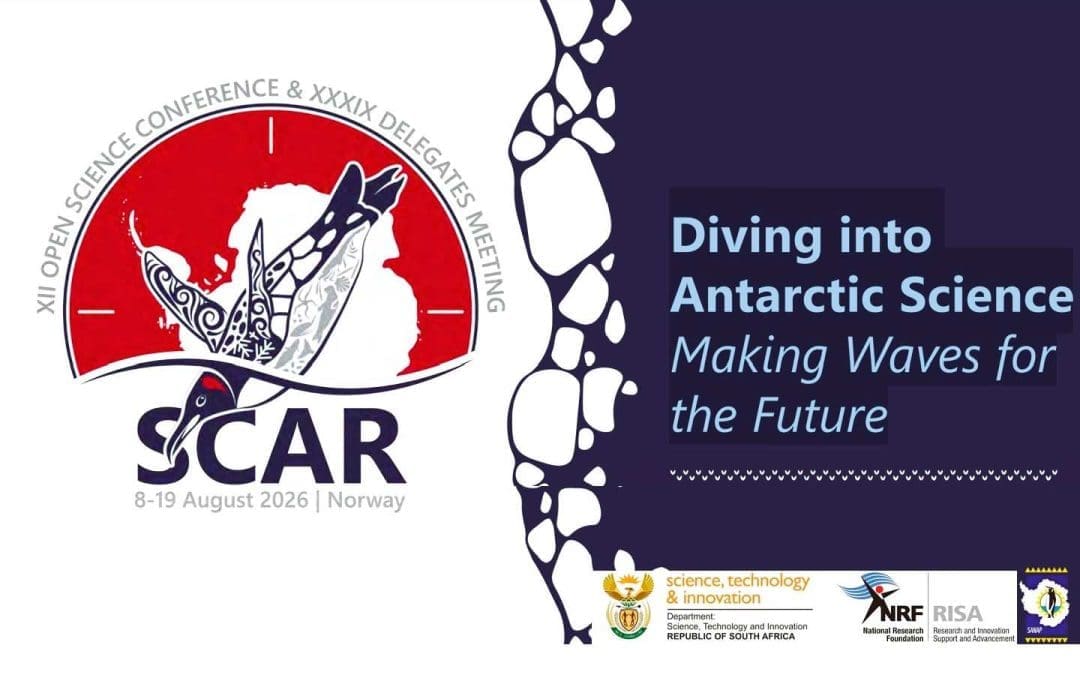
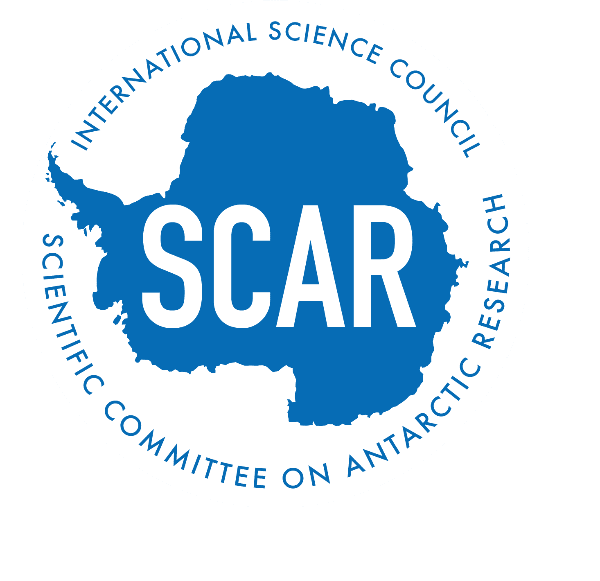 The South African National Antarctic Programme (SANAP) is pleased to share an exciting update from the Scientific Committee on Antarctic Research (SCAR). The international Antarctic research community is preparing to gather for one of the most anticipated events in polar science: the 12th SCAR Open Science Conference, taking place 8–19 August 2026 in Oslo, Norway. Hosted by SCAR in partnership with the Norwegian Polar Institute, the conference will be held at the centrally located Clarion Hotel – The Hub, bringing together researchers, students, policy makers, and partners from across the globe under the theme:
The South African National Antarctic Programme (SANAP) is pleased to share an exciting update from the Scientific Committee on Antarctic Research (SCAR). The international Antarctic research community is preparing to gather for one of the most anticipated events in polar science: the 12th SCAR Open Science Conference, taking place 8–19 August 2026 in Oslo, Norway. Hosted by SCAR in partnership with the Norwegian Polar Institute, the conference will be held at the centrally located Clarion Hotel – The Hub, bringing together researchers, students, policy makers, and partners from across the globe under the theme:
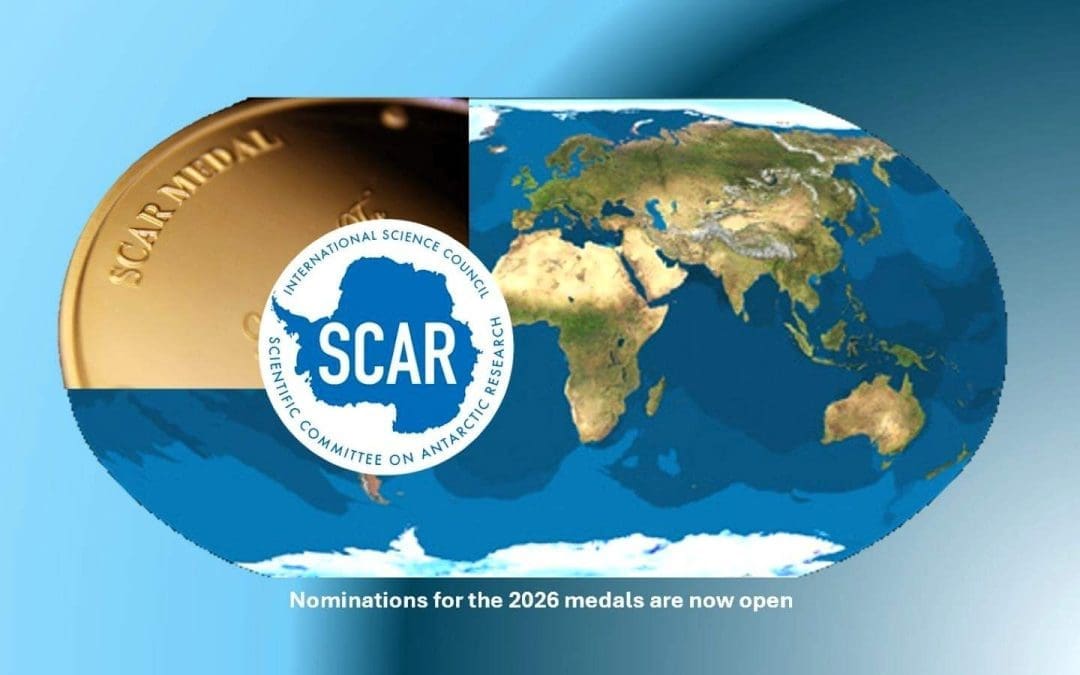
 Honouring Outstanding Contributions
Honouring Outstanding Contributions
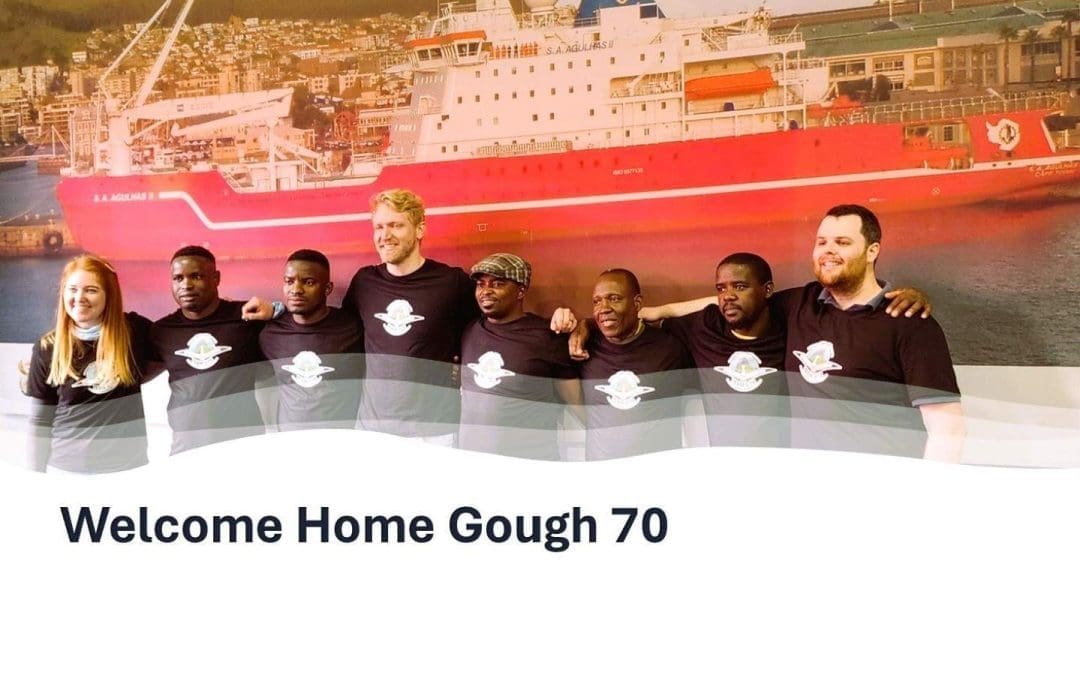
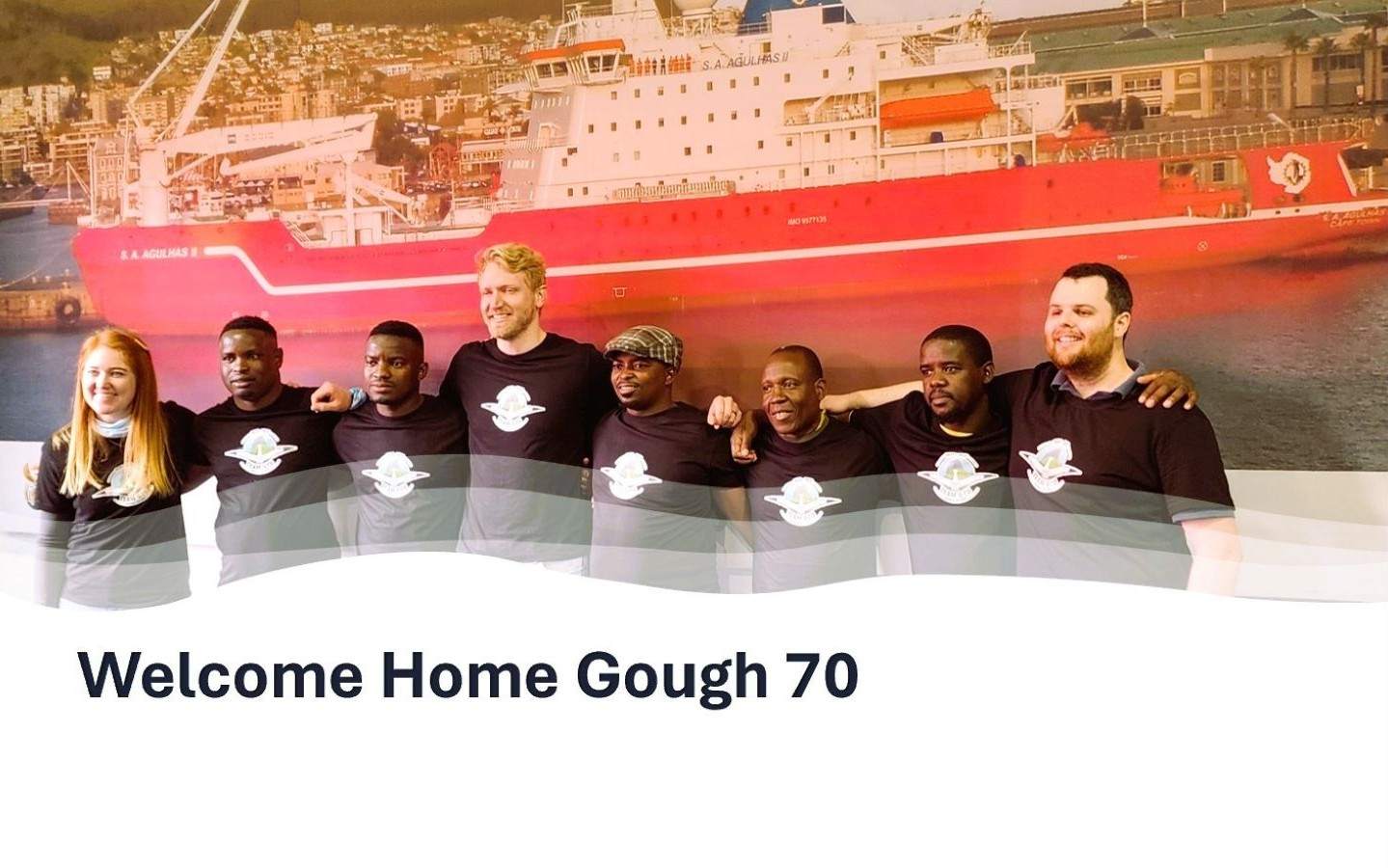 After more than a year on the remote and rugged shores of Gough Island, the Gough 70 Overwintering Team has safely arrived back in Cape Town today — marking the end of another remarkable chapter in South Africa’s contribution to global environmental and climate research.
After more than a year on the remote and rugged shores of Gough Island, the Gough 70 Overwintering Team has safely arrived back in Cape Town today — marking the end of another remarkable chapter in South Africa’s contribution to global environmental and climate research.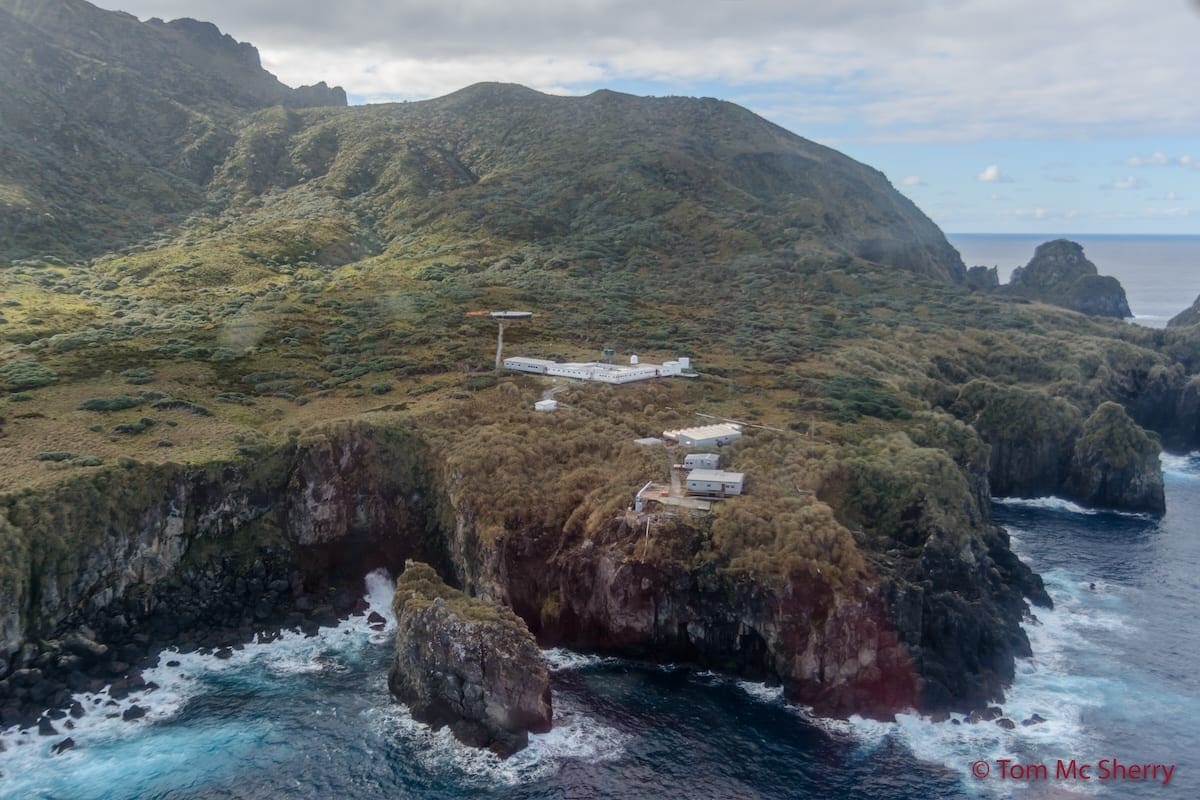 The team has spent the past year maintaining and operating the South African weather and research station on Gough Island, one of the most isolated and scientifically significant islands in the South Atlantic Ocean. Their work forms a vital part of the South African National Antarctic Programme (SANAP), contributing to international understanding of climate systems, ocean–atmosphere interactions, and biodiversity conservation in one of the world’s most pristine environments. Throughout their 13-month stay, the Gough 70 team challenged weather conditions, isolation, and logistical difficulties — yet continued to deliver crucial meteorological observations and research support. Their dedication and resilience embody the true spirit of the SANAP community.
The team has spent the past year maintaining and operating the South African weather and research station on Gough Island, one of the most isolated and scientifically significant islands in the South Atlantic Ocean. Their work forms a vital part of the South African National Antarctic Programme (SANAP), contributing to international understanding of climate systems, ocean–atmosphere interactions, and biodiversity conservation in one of the world’s most pristine environments. Throughout their 13-month stay, the Gough 70 team challenged weather conditions, isolation, and logistical difficulties — yet continued to deliver crucial meteorological observations and research support. Their dedication and resilience embody the true spirit of the SANAP community.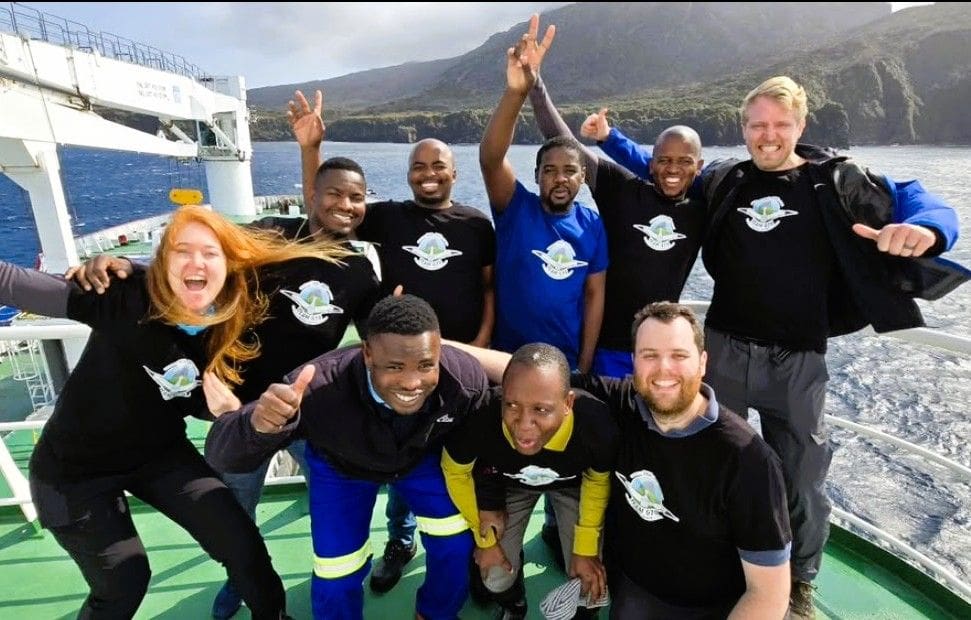 We extend a heartfelt welcome home to each member of the team and express our thanks for their commitment and hard work. Their efforts not only uphold South Africa’s legacy of excellence in polar and sub-Antarctic research but also ensure that critical data continues to support global scientific collaboration. (above taken when arriving at Gough Island in 2024)
We extend a heartfelt welcome home to each member of the team and express our thanks for their commitment and hard work. Their efforts not only uphold South Africa’s legacy of excellence in polar and sub-Antarctic research but also ensure that critical data continues to support global scientific collaboration. (above taken when arriving at Gough Island in 2024)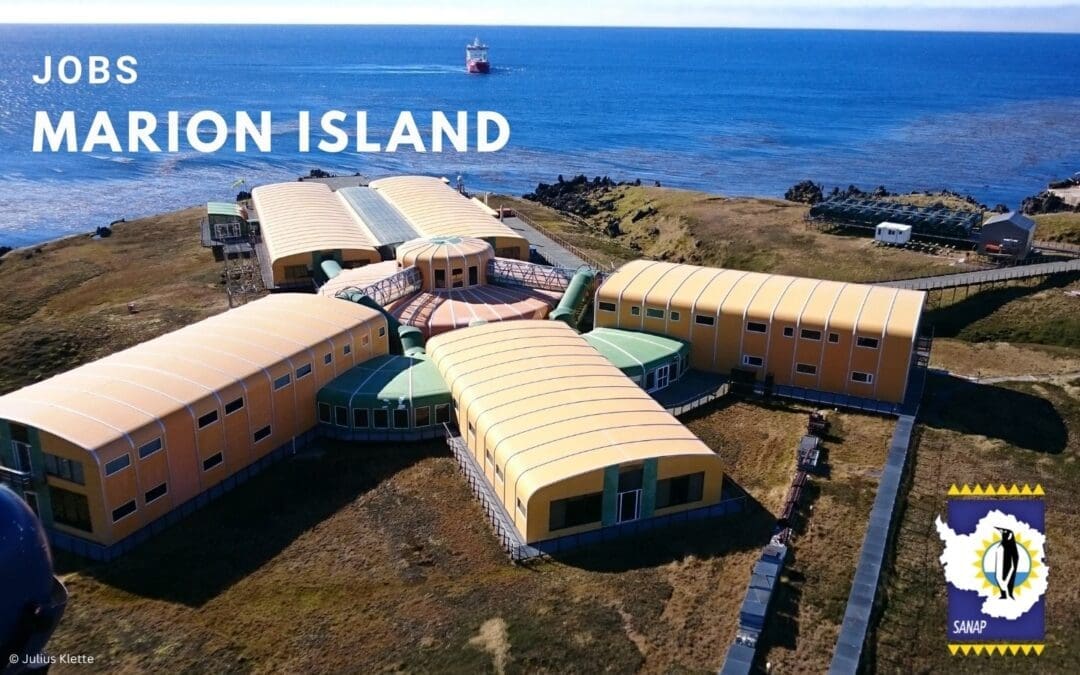
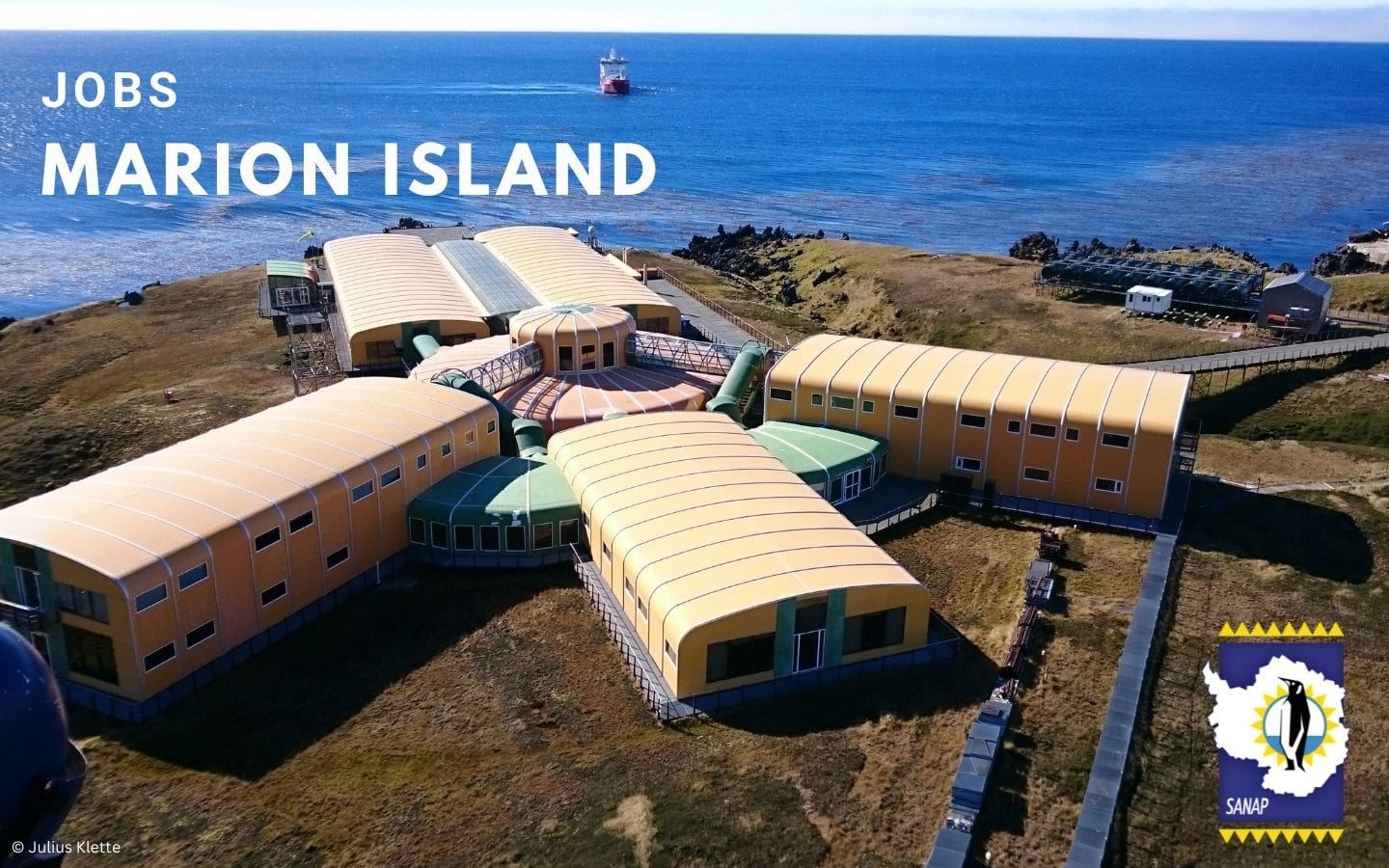
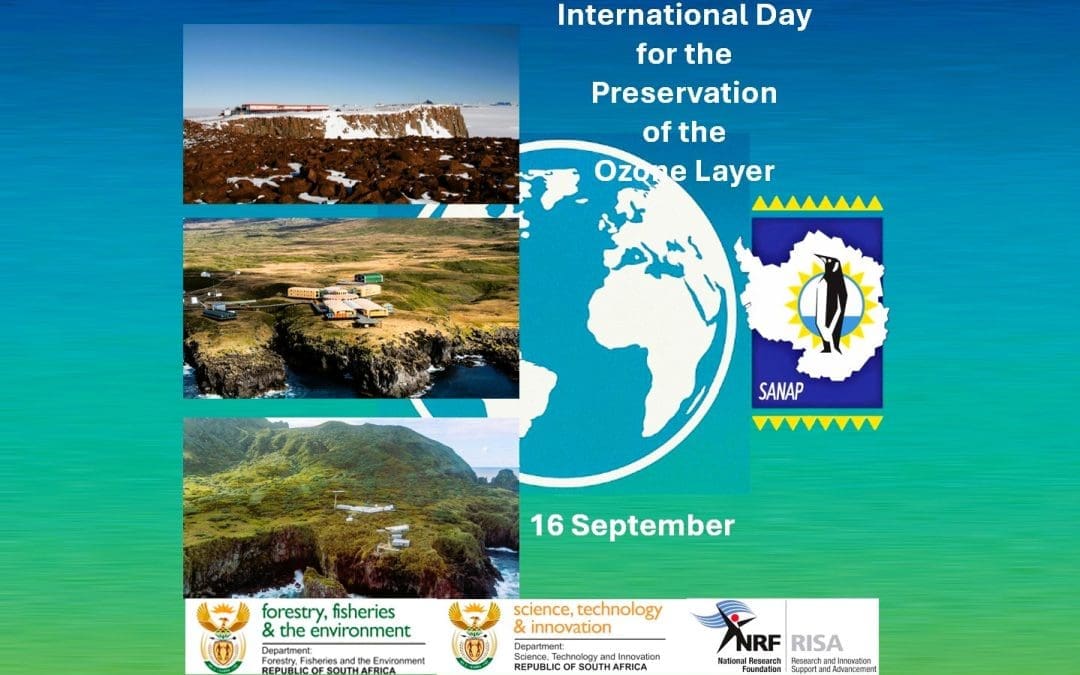
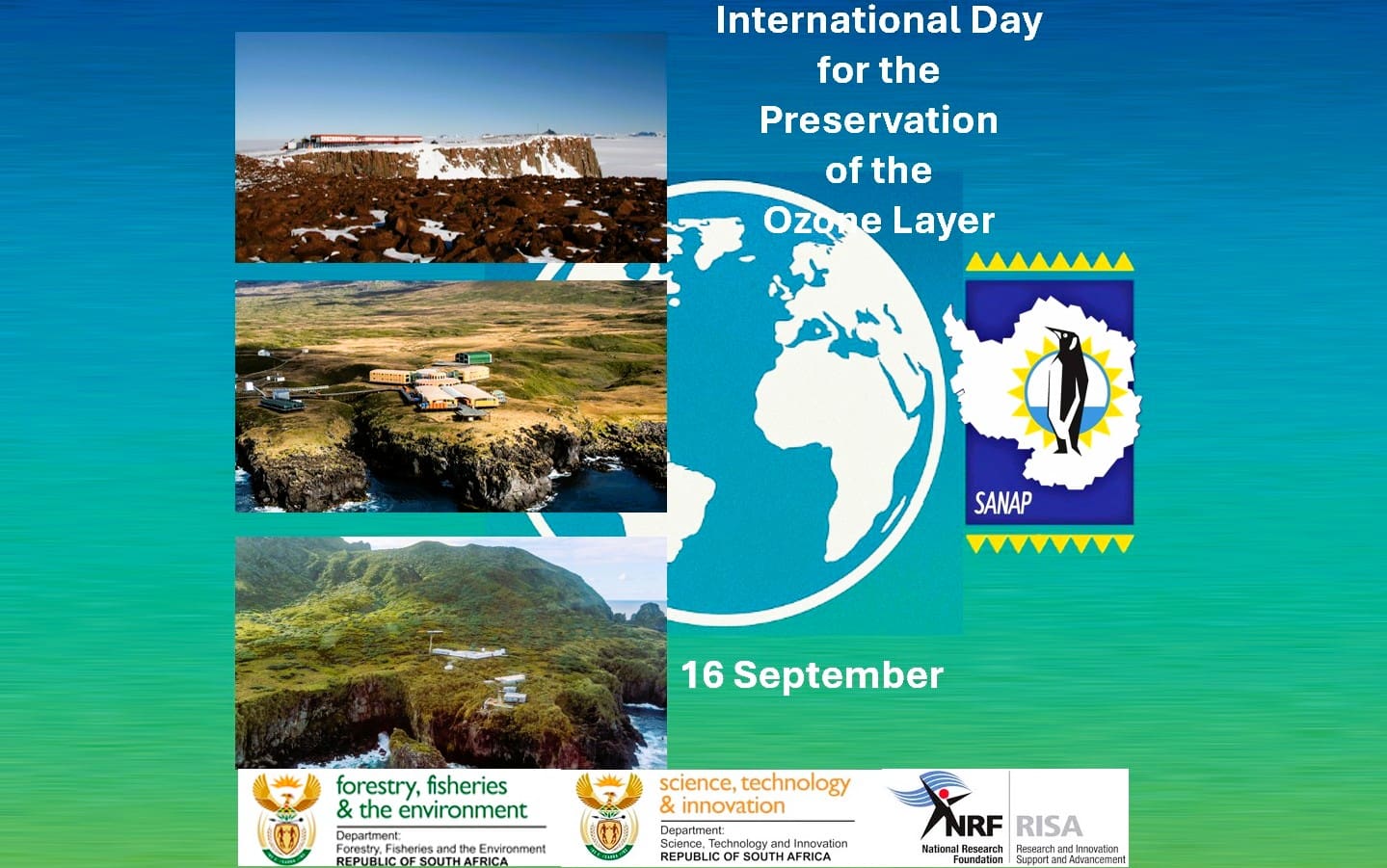 South Africa contributes directly to this global effort through the South African National Antarctic Programme (SANAP). At SANAE IV in Antarctica, as well as on Marion and Gough Islands, SANAP scientists conduct long-term atmospheric and environmental monitoring. This includes measuring stratospheric ozone levels, UV radiation, and atmospheric interactions—critical data that help track ozone recovery and understand climate–ozone linkages.
South Africa contributes directly to this global effort through the South African National Antarctic Programme (SANAP). At SANAE IV in Antarctica, as well as on Marion and Gough Islands, SANAP scientists conduct long-term atmospheric and environmental monitoring. This includes measuring stratospheric ozone levels, UV radiation, and atmospheric interactions—critical data that help track ozone recovery and understand climate–ozone linkages.



